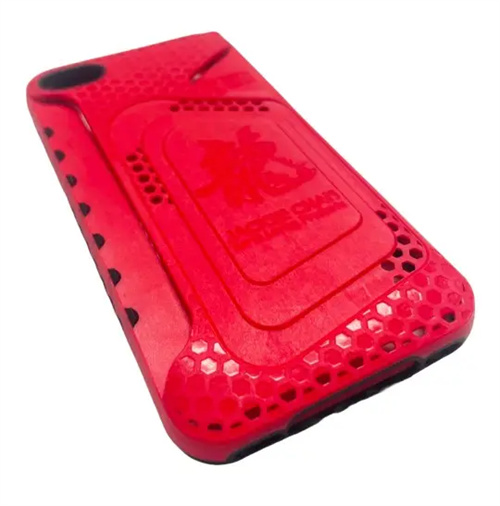Adjustment of injection molded sliding feet (vibration damping pads)
The injection molding shoe (vibration damping pad) is a key component installed at the bottom of the injection molding machine. Its main function is to support the equipment, adjust the machine body level, and reduce vibration and noise. The accuracy of its adjustment directly affects the operating stability of the injection molding machine and the quality of the plastic parts. The injection molding machine will produce severe vibration during operation. If the shoe is not adjusted properly, it will cause the machine body to tilt, increase the clearance between the components, and accelerate equipment wear. At the same time, the vibration is transmitted to the mold, which may cause defects such as flash and dimensional instability in the plastic parts. For example, due to loose shoe, the machine body tilt exceeded 0.5mm/m. The dimensional tolerance of the produced plastic parts exceeded the design requirements. The mold guide pins and sleeves were severely worn and needed to be replaced monthly.

Before adjusting injection molding runners, thorough preparation is required, including shutting down the equipment, cleaning the site, and preparing tools. First, shut down the injection molding machine and disconnect the power supply to ensure safety during the adjustment process. Second, clean the runners from debris and oil to prevent slipping or tools from slipping during adjustment. Then, prepare tools such as a level (with an accuracy of at least 0.02 mm/m), a wrench, iron plugs, and a dial indicator. The level is used to measure the levelness of the machine body, and the iron plugs are used to adjust the runner height. For example, one workshop failed to clean the oil before adjusting the runners, causing the wrench to slip and damage the runner bolts, delaying production. Furthermore, the runners must be inspected for condition. If cracks, deformation, or deterioration of the rubber pads are observed, they should be replaced before adjustment. The rubber pads should meet the required hardness, generally 60-70 Shore A, to ensure effective vibration damping.

Measuring and adjusting the levelness of an injection molding machine is a core step in adjusting the slides, and must be performed according to the prescribed procedures. First, place a spirit level on the upper surfaces of the machine’s movable and fixed platens and measure the levelness in both the longitudinal and transverse directions. The longitudinal direction is along the screw axis, and the transverse direction is perpendicular to the screw axis. Next, determine the direction and degree of tilt based on the spirit level readings. The side to which the bubble on the spirit level is tilted indicates that the machine is tilted too high. Finally, adjust the levelness by adjusting the slide height. Loosen the slide’s fixing bolts, insert a metal sheet of appropriate thickness on the lower side, or tighten the adjustment bolt on the higher side to maintain the machine level within 0.1mm/m. For example, if the longitudinal levelness of a certain injection molding machine is measured to be 0.3mm/m and the bubble is tilted to the left, indicating that the left side of the machine is tilted too high, loosen the adjustment bolt on the left slide to lower the left side of the machine, and finally adjust the longitudinal levelness to 0.08mm/m. It should be noted that multiple measurements and fine-tuning should be performed during the adjustment process to avoid excessive adjustments at one time that may cause the camera to shake.

Tightening the skids is just as important as ensuring uniform force distribution. Improper tightening or uneven force distribution can affect adjustment effectiveness and equipment stability. After adjusting the machine body for levelness, tighten the skid bolts evenly and diagonally. The tightening torque should comply with the machine manual, typically 300-500 N · m , to prevent loosening the skids due to over-loosening or breakage due to over-tightening. The force distribution on each skid should also be checked. This can be determined by placing a pressure sensor between the skid and the ground or by observing the loosening of the iron plate. Ensure uniform force distribution on each skid, with a deviation of no more than 10% . For example, after adjustment on an injection molding machine, excessive force was found on one skid, causing a depression on that side of the floor. By increasing the thickness of the iron plate on the other skids, the force distribution on each skid was evened out, resolving the problem. Furthermore, for large injection molding machines, steel plates should be placed at the base of the skids to increase the load-bearing area and prevent ground subsidence from affecting machine body levelness.

Regular inspection and maintenance of injection molding runners is crucial to ensuring their long-term effectiveness. During daily production, runner bolts should be checked weekly for looseness, machine levelness should be measured monthly, and rubber pads should be inspected quarterly for signs of wear. Any deviation in levelness exceeding 0.2 mm/m requires prompt readjustment; any cracking or loss of hardness in the rubber pad requires replacement; and any deformation or damage to the runner requires immediate shutdown and repair. For example, one company established a runner maintenance log, measuring and recording the levelness of its injection molding machines monthly. By promptly adjusting any deviations, they reduced equipment failure rates by 30% and extended mold life by 50%. Furthermore, after relocating an injection molding machine or replacing a mold, the runners should be re-inspected and adjusted to ensure machine levelness meets requirements. Through scientific and rational adjustment and maintenance, injection molding runners can effectively provide support and vibration reduction, improving the machine’s operational stability and part quality.
